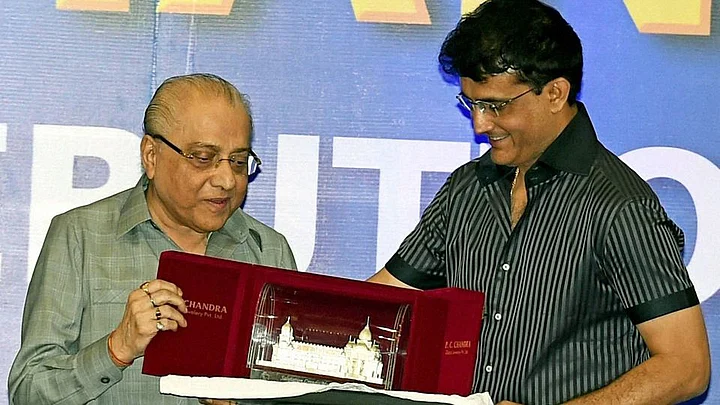He was cricket’s foremost administrator in the 1990s and also the man who taught the sport how to earn billions of dollars.
There is, however, one facet of Jagmohan Dalmiya’s tenure as a cricket administrator which will never get any major mention and that is to do with his relation with former India captain Sourav Ganguly.
Their Rise Coincided
In the late 1990s, Ganguly’s surprise recall after four years to the Indian squad for the 1996 England tour, was credited to Dalmiya. All sorts of aspersions were cast on Ganguly for being close to Dalmiya, the then BCCI secretary. Ganguly was chosen as an all-rounder, but he ended up making a mark as a batsman on that tour.
Thereafter Ganguly rose in stature, but his relation with Dalmiya remained stable. Dalmiya then became the International Cricket Council (ICC) president in 1997 and swelled the coffers of the world body. Back in India, Ganguly emerged as India’s go-to man with the bat. He was then propelled into the role of Indian captain in 2000, only because Sachin Tendulkar did not want the job anymore.
Dalmiya Backed Ganguly’s Approach
Interestingly a year later in 2001, Dalmiya returned to the BCCI as their president. By now Ganguly had a mixed bag as a captain and there was constant pressure on him. It was mentioned in the power circles that it was all because of Dalmiya’s support that Ganguly managed to hold onto his position.
The way Indian cricket was run then in 2001 meant that all power was in the hands of Dalmiya and hence the direct access of Ganguly worked wonders. Ganguly’s deputy Rahul Dravid and coach John Wright worked behind closed doors to plot against rivals, while the captain dealt with the officialdom.
It was Ganguly’s close relation with Dalmiya which helped pave the way for discussions for the first centralised annual player contracts. All the credit for bringing the system in rests with the likes of Dravid, Anil Kumble and Professor Ratnakar Shetty, but a lesser administrator could have easily stalled the process.
Signs of Change in Relations
It was indeed coincidental that Ganguly’s troubled times as a leader almost coincided with the end of the powerful Dalmiya era.
In 2004-05, when Dalmiya had made way for Ranbir Mahendra, Ganguly started losing grip of the side. He got injured and missed two Tests against Australia. Thereafter he got banned for slow over-rate in the ODI series against Pakistan. Dalmiya was not in power, but was the power behind the throne around this time.
So there were constant murmurs about the state of the relation between Ganguly and Dalmiya. Under the cloud of a ban for slow over-rate, Ganguly played a tri-series in Sri Lanka under Dravid in 2005 and then came back as captain for one final time on that now historic tour of Zimbabwe.
All hell broke loose as coach Greg Chappell’s honest email to the BCCI was leaked almost the same time as when Dalmiya was battling a challenge from Sharad Pawar & Co. A public inquest into the Ganguly vs Chappell row was conducted by a panel which also included Dalmiya. That was the first sign that the Ganguly-Dalmiya relation was not the same. Ganguly was sacked, Chappell retained and Indian cricket moved into a new era on the field.
No Longer Numero uno
Off the field Dalmiya’s unquestioned power in Indian cricket circles was ended by an united front put together by Pawar. Thus, ended a phase when cricket started and ended in Kolkata in India.
Thereafter, Dalmiya was never the same as he lost Cricket Association of Bengal (CAB) elections and had cases of misappropriation of 1996 World Cup funds, filed by BCCI, to fight. For Ganguly, struggles continued as well as he was first dropped and then made a dramatic comeback in 2006. His cycle of comebacks ended in 2008, whereas Dalmiya took one final shot at leadership at state and national level.
Right Place, Right Time
Dalmiya made cricket realise its TV potential in the 1990s and Ganguly was one of the stars of that revolution. There could not have been a better jugalbandi for Indian cricket at that time.
(At The Quint, we question everything. Play an active role in shaping our journalism by becoming a member today.)
